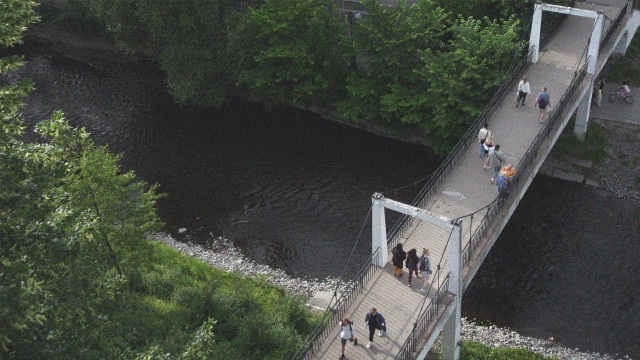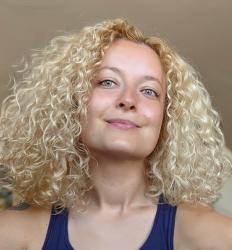If you’re reading this, chances are you are pretty clued up on what makes a captivating and memorable film production. Close-up shots are basically a must-have as they capture the nuances of the actors’ performances, establish an emotional connection between the characters and the audience, and draw our attention towards key details in the scene. A dynamic edit is vital for crafting a seamless narrative flow, as well as for setting the pace of the film and ensuring that we are hooked from the very first shot to the last. When done right, the cinematography has the power to take your breath away, and the score to reduce you to a blubbering mess. Burden Of Proof has none of the above. Yet it’s one of the most arresting and evocative short films I have seen in a long while.
Admitting that he had to essentially discard most of the tools in his toolbox to create his short, Norwegian director Ivar Aase’s drama goes pretty much against every rule book about filmmaking, elevating the phrase ‘stripped back’ to a whole new level. But don’t be put off by the rather uninspiring thumbnail, Burden Of Proof is a thought-provoking mini-masterpiece of writing, directing and physical acting which will creep up under your skin and linger there for a long time to come.
*** Spoilers ahead ***
Captured in a single, locked off nine-minute take, the story follows (or perhaps ‘observes’ is a more accurate word) Anna (Helene Bergsholm), as she meets her ex boyfriend Robert (Dan Skjæveland) on a busy, pedestrian bridge in central Oslo. With the camera positioned high above and at a considerable distance away from where the interaction between them takes place, we can just about make out the two figures, with only the patchy, live audio recording of their conversation and body language aiding us in piecing the story together. Their polite, if slightly strained, conversation soon takes an unexpected turn, when Anna accuses Robert of abuse and rape.
“I wanted to make a visually simplistic film and move out of my comfort zone, while also pushing the audience out of theirs”
“The film is inspired by the countless cases where victims in already difficult situations are struggling to prove their case” – Aase shared with S/W – “I was interested in exploring this feeling of hopelessness and desperation, through a strong and risk-taking character. I wanted to make a visually simplistic film and move out of my comfort zone, while also pushing the audience out of theirs. By slowly unfolding the backstory of the couple, I wanted to depict the nuances of an abusive partner and the dynamics at play with his victim.”
Having watched thousands of submissions over the past five years I can usually tell where a story is headed, in the most general terms at least, but I must confess that Burden Of Proof caught me completely off guard, just as Aase intended it to. As the story unfolded and intensified, I found that I wasn’t less invested in the characters because I couldn’t see their faces. On the contrary, putting this physical distance between us and the public display of abuse made it almost unbearably difficult to watch, as we are simultaneously desperate to take a closer look and increasingly frustrated at being reduced to helpless spectators.

“I have always been drawn to the idea of making a one-take film, without it being just visual style”, director Aase explains as we discuss his inspiration
But the directorial decision to keep us away from the action serves another purpose. In fact, every production and creative choice is logical and intricately tied to the narrative, and more pointedly to Anna’s character, as it becomes clear by the end of the film. The composition of the shot is slightly off-centre because we need to believe that it wasn’t framed by a professional DoP but by Anna who most likely used her phone to record the confession from her flat. Aase also worked hard with sound designer Peder Hammersborg to ensure that the quality of the audio wasn’t too good, going against all their instincts and eventually winning the latter Best Sound Design at Interfilm Berlin 2022. The result of their combined efforts is awe-inspiring and utterly chilling. It also immediately demands a second, closer watch, where every word and every shrug takes on an entirely different and deeper meaning.
Aase perfectly captures the anxiety and fear felt by many victims of domestic and sexual abuse, and by forcing us to remain far away from Anna, he actually brings us closer to her dread, making us feel every bit of it. If you realised you were holding your breath during the entire second half of the film, you’re not the only one.

 Serafima Serafimova
Serafima Serafimova